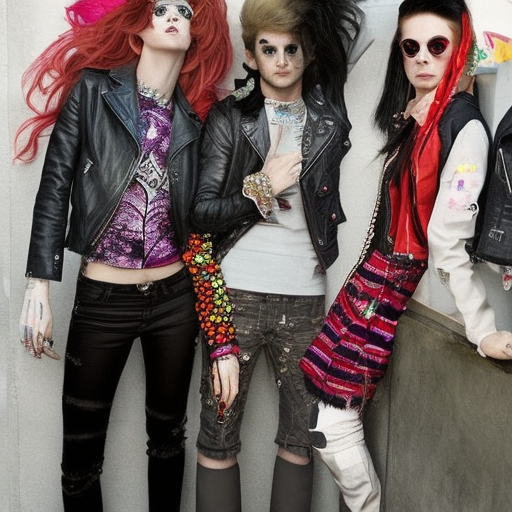Punk Fashion: A Rebellion Against Conformity
Punk fashion emerged in the 1970s as a bold and rebellious subculture that rejected mainstream societal norms and embraced a DIY (do-it-yourself) ethos. It was characterized by its unconventional and provocative style, which reflected the anti-establishment and anti-authoritarian attitudes of the punk movement. Punk fashion became an essential part of punk culture, serving as a visual expression of the movement’s values and ideals.
The Origins of Punk Fashion
Punk fashion originated in the underground music scenes of New York City and London. Influenced by the raw energy of punk rock music and the social and economic unrest of the time, punks sought to challenge the status quo through their fashion choices. They rejected the polished and glamorous aesthetics of mainstream fashion, opting instead for a deliberately disheveled and confrontational look.
The Punk Look
The punk look was characterized by its rebellious and anarchic nature. Punks embraced torn clothing, safety pins, and unconventional materials such as leather, PVC, and tartan. They often customized their garments with slogans, band logos, and political statements, using clothing as a form of self-expression and protest. The punk look was intentionally provocative and aimed to shock and challenge societal norms.
Key Elements of Punk Fashion
- Hairstyles: Punk hairstyles were often radical and unconventional. The most iconic punk hairstyle is the mohawk, where the hair is shaved on the sides and styled into a strip of upright hair in the center. Other popular hairstyles included brightly colored or spiked hair, shaved heads, and asymmetrical cuts.
- Band T-shirts: Punks often wore T-shirts featuring their favorite punk bands as a way to show their allegiance to the punk music scene. These shirts became a form of identification and a way to connect with like-minded individuals.
- Leather and Denim: Leather jackets and denim vests adorned with patches, pins, and studs were staple items in punk fashion. These garments represented rebellion and were often personalized with DIY embellishments.
- Safety Pins and Chains: Safety pins were used as a form of decoration and to hold clothing together, creating a deliberately torn and deconstructed aesthetic. Chains were also popular accessories, worn as belts, bracelets, or attached to clothing for added edge.
- Doc Martens and Combat Boots: Punk fashion embraced sturdy and practical footwear, with Doc Martens and combat boots being the most iconic choices. These boots were often scuffed and worn, reflecting the punk ethos of rejecting consumerism and embracing individuality.
The Legacy of Punk Fashion
Punk fashion had a significant impact on the fashion industry and continues to influence designers and subcultures today. Its DIY spirit and rejection of mainstream fashion norms paved the way for alternative fashion movements and subcultures. Elements of punk fashion, such as ripped jeans, band T-shirts, and leather jackets, have become timeless staples in popular culture.
Punk fashion also challenged traditional gender norms, with both men and women embracing androgynous and non-conformist styles. The punk movement provided a platform for self-expression and acceptance, regardless of gender or sexual orientation.
In conclusion, punk fashion emerged as a rebellious and provocative subculture that rejected mainstream fashion and societal norms. It was characterized by its DIY aesthetic, torn clothing, safety pins, and unconventional materials. Punk fashion continues to inspire and influence alternative fashion movements and serves as a reminder of the power of fashion as a form of self-expression and protest.












